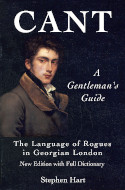THE CROWN AND ANCHOR STRAND
This famous tavern extended from Arundel-street eastward to Milford-lane, in the rear of the south side of the Strand, and occupied the site of an older house with the same sign. Strype, in 1729, described it as "the Crown Tavern; a large and curious house, with good rooms and other conveniences fit for entertainments." Here was instituted the Academy of Music in 1710; and here the Royal Society Club, who had previously met at the Mitre in Fleet-street, removed in 1780, and dined here for the first time on December 21, and here they continued until the tavern was converted into a club-house in 1847.
The second tavern was built in 1790. Its first landlord was Thomas Simpkin, a very corpulent man, who, in superintending the serving of a large dinner, leaned over a balustrade, which broke, when he fell from a considerable height to the ground, and was killed. The sign appears to have been originally "The Crown," to which may have been added the Anchor, from its being the emblem of St. Clement's, opposite; or from the Lord High Admiral having once resided on the site. The tavern contained a ball-room, 84 feet by 35 feet 6 inches; in 1798, on the birthday of C. J. Fox, was given in this house, a banquet to 2000 persons, when the Duke of Norfolk presided. The large room was noted for political meetings in the stormy Tory and Radical times; and the Crown and Anchor was long the rallying-point of the Westminster electors. The room would hold 2500 persons: one of the latest popular orators who spoke here was Daniel O'Connell, M.P. There was originally an entrance to the house from the Strand, by a long passage, such as was the usual approach to our old metropolitan taverns. The premises were entirely destroyed by fire, in 1854, but have been rebuilt.[35]
Here Johnson and Boswell occasionally supped; and here Johnson quarrelled with Percy about old Dr. Monsey. Thither was brought the altar-piece (St. Cecilia), painted by Kent for St. Clement's Church, whence it was removed, in 1725, by order of Bishop Gibson, on the supposition that the picture contained portraits of the Pretender's wife and children.
[35] See Whittington Club, Vol. I. p. 313.
John Timbs
Club Life of London Vol. II
London, 1866

